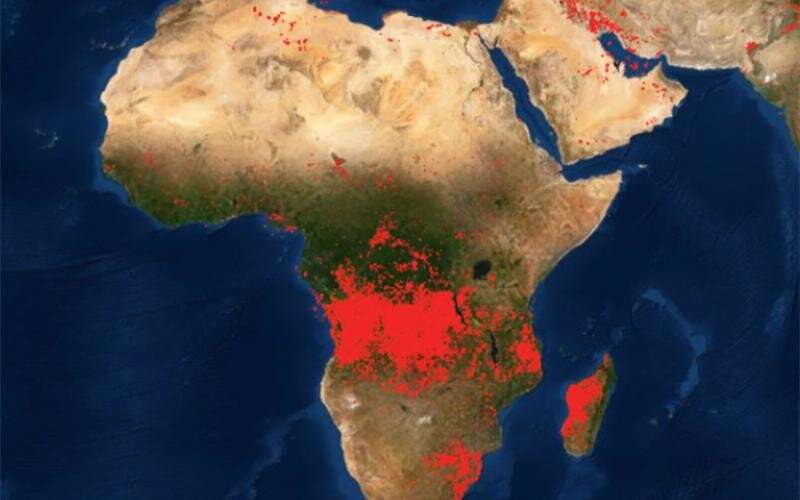Predicting fire risk

Researchers at Oak Ridge National Laboratory developed a method that uses machine learning to predict seasonal fire risk in Africa, where half of the world's wildfire-related carbon emissions originate.
Their approach draws on data about underlying environmental drivers such as ocean temperatures and land surface changes in addition to more commonly used atmospheric and socioeconomic indicators. The method allows scientists to gain a deeper understanding of the relative importance of different variables such as soil moisture and leaf area.
"We found that oceanic and terrestrial dynamics are the most critical factors influencing the accuracy of seasonal fire prediction for these vulnerable ecosystems," said ORNL's Jiafu Mao. "Disturbances like fire can have a lasting impact on regional environments and global carbon cycling."
The scientists' computational framework could be applied to other regions or generalized to assess global fire risk and inform fire management practices that address environmental and safety concerns.
More information: Yan Yu et al. Quantifying the drivers and predictability of seasonal changes in African fire, Nature Communications (2020). DOI: 10.1038/s41467-020-16692-w
Journal information: Nature Communications
Provided by Oak Ridge National Laboratory




















